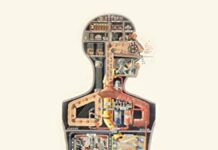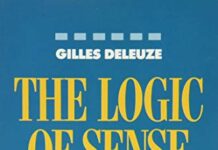
Ebook Info
- Published: 1986
- Number of pages: 264 pages
- Format: PDF
- File Size: 41.38 MB
- Authors: Gilles Deleuze
Description
Discusses the theoretical implications of the cinematographic image based on Henri Bergson’s theories
User’s Reviews
Reviews from Amazon users which were colected at the time this book was published on the website:
⭐A brief review of the copy editing of this edition (Bloomsbury) and not Deleuze’s Cinema 1, per se, which in itself is worthy of six stars. The Bloomsbury edition is basically attractive in design (subjective evaluation), being one book from the larger Bloomsbury Revelations line.This Cinema 1 therefore shares the aesthetic of the overall series, all given a refreshed and casual look (e.g. reproduction benday images are overlaid with brightly colored dots and script typefaces, etc.). Inside is where the real problems lie. A sans-serif typeface is used for the body of the text, which slows down the flow of reading, as sentences don’t read with the same fluidity as with a serifed font. With the sans-serifed font the reading feels less pleasant, and less like a book and more like a PDF that was printed and bound. So, I knock this edition for the use of its sans-serif font, which makes extended reading a bit more taxing in my experience. A second problem I have with the body of the text is the number of relatively egregious typos, which makes the text occasionally seem to have been copy edited by some computer program, e.g. m’s are used instead of in’s. A last mild critic is of the text and sentence layout itself, which is jammed together in spots and spread in others all seemingly to avoid hyphenation (a computer as typesetter comes to mind). My recommendation would be to pick up the University of Minnesota edition over the Bloomsbury (they both share the same translation but Minnesota’s has the better text layout and design on the inside, more pleasant to read as a book).
⭐This is an interesting read but complex. A background in Marxian and Hegelian Philosophy, especially in dialectics and dialectical materialism definitely helps the perceiving eye. Lacking are much needed pictures or sequences describing the various movie scenes, shots and snippets within various mentioned films. You have to be quite the movie buff or enthused to gather together an idea of what is taking place or being shown in the examples stated throughout the work and used to help clarify the concept at hand. Being I am not a movie person but more the book person, I struggled in gaining much from the examples. Since, Deleuze is the advocate of Virtual Reality, something for the Kindle including actual shots and scenes from the movies used as examples for the concepts may be a good and important revision/new-edition.
⭐Pleasure to read this. Concepts are difficult but explained in a much less cryptic way than expected.
⭐Good philosophical book. Difficult reading though.
⭐Utter pretentious pseudo-philosophic crap. Films students without a doubt will be forced to read this at some point, just plow through it and you’ll be done in no time.
⭐The above review of this book does a great job already, so I will try to complement it as best I can. Deleuze is a difficult thinker for newcomers. His ideas tend to refer to one another and have developed into a complex network of concepts over the course of his writings. The good news is that Deleuze is drawing an immense amount of interest in the US and UK now.Deleuze sets out in the cinema books to create a theory of film and the image that stands in sharp contrast to the film theory we’re most accustomed to. Deleuze does not accept that narrativity is a given in film. In fact, he wants to find a way of appreciating and describing what distinguishes film from language and narrative systems. For Deleuze, the moving image is not a system of reference. One doesn’t refer to something through a segment of film. The filmic medium is direct, not referential.Cinema 1 is thus a look at how the early cinema learned to produce the “movement image.” It’s a review of “auteur” film-makers and their experiments with the medium (in addition to those mentioned above are Welles, Godard, Eisenstein, Lang, Resnais, Hitchock…) to produce perception, affect, and action.He contrasts montage with mise-en-scene. He shows how action corresponds to situations, either responding to situations or modifying them. He describes the discovery of depth of field, and use of affect in close ups and still images, the importance of shot and reverse shot sequences, and movement within the scene vs of the camera. He shows how pre-war film maintained a commitment to the whole. Characters’ actions were motivated by situations, and films as a whole hung together.The book concludes with Hitchcock’s invention of the audience as a third term in the filmic experience: subject, object, audience. Audiences complete Peirce’s sign system (firstness, secondness, thirdness) because they interpret the film. Indeed, Hitchcock’s art was in showing the audience what the character would only discover later, and in making his films into logical puzzles rather than whodunits.A dazzling book, I had to read it twice, and many of the films referenced won’t be on dvd for years….
⭐Our Hero Deleuze is back at it once again on his Bergsonian quest to conquer the movement-image.This time descending light from the plane of immanence will guide our hero through phenomenological blunders. Wow! what an amazing book! Deleuze has done it again, I mean talk about the varities! Perception-Image, Affect Image and Action Image. It totally clairfies any misconsceptions about the liquid, gasous and solid states. If there is such thing as a rhizomatic world, could the Time-Image be a prequel? Deleuze is smoking!!!!
⭐Deleuze considers the movement-image in cinema, montage as a representational process of cutting, represents time indirectly; this is similar to the reformulation of perception in daily experience, hence ideology and it’s representation in cinema. The heuristic series: perception, affect, impulse, action, is from classical philosophy, and has the same source as the method suggested in Foucault’s archaeology of knowledge. Cinema 1 is a better and more accessible book than Cinema 2, though both are excellent.
⭐great everything as ordered
⭐Everything fine with it. Thanks
⭐a dense but wonderful book, although I found cinema 2 more applicable to my research, the book came promptly and was in perfect condition
⭐Great book
Keywords
Free Download Cinema 1: The Movement-Image in PDF format
Cinema 1: The Movement-Image PDF Free Download
Download Cinema 1: The Movement-Image 1986 PDF Free
Cinema 1: The Movement-Image 1986 PDF Free Download
Download Cinema 1: The Movement-Image PDF
Free Download Ebook Cinema 1: The Movement-Image





